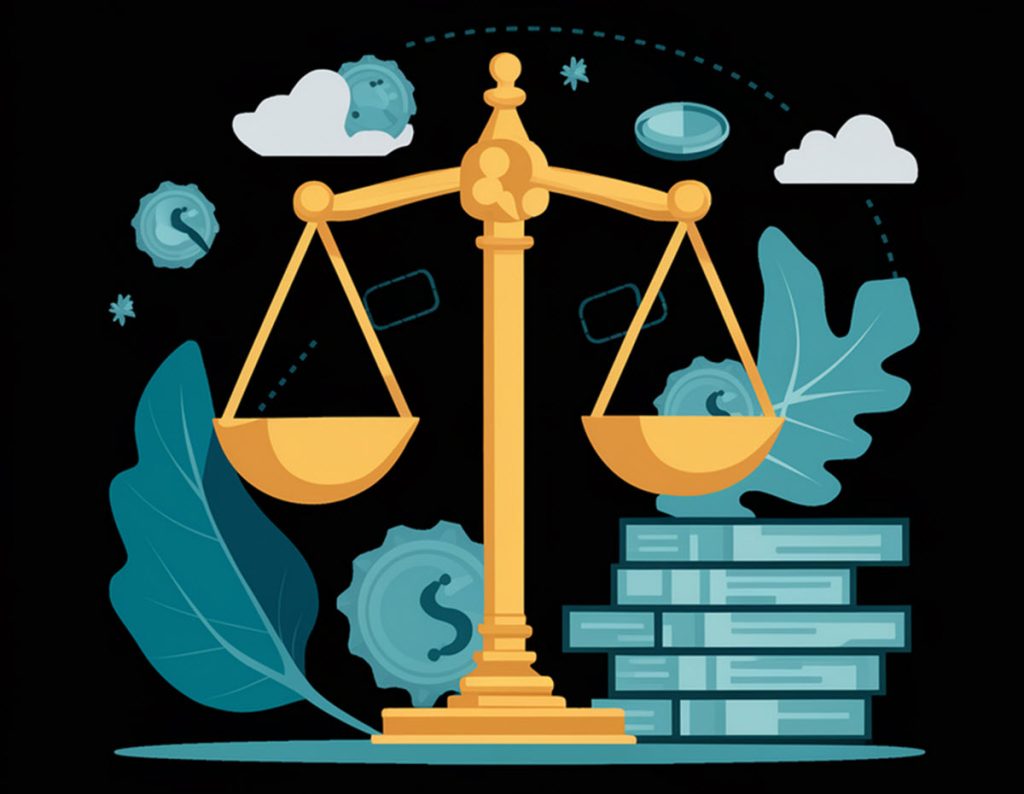What is a Company Balance Sheet?
A company balance sheet is a fundamental financial statement that provides a snapshot of a company’s financial position at a specific point in time. It outlines the company’s assets, liabilities, and shareholders’ equity, giving investors and stakeholders an overview of what the company owns and owes.
The basic idea of a company balance sheet is to provide the reader with a summary of the
company´s economic situation at a specific point in time, including assets, equity and liabilities. It is fairly common to present the most recent balance sheet together with the previous balance sheet, to make it possible for the reader to compare the two statements and look for trends, changes, etc.
Exactly how the balance sheet is outlined, how detailed the balance sheet will be, which posts that will be included, and how the numbers are calculated, will vary depending on various factors, including legal requirements, prevailing accounting practises, and company policy. In many parts of the world, legal requirements will differ depending on company type and size.
In general, large companies tend to have more complex balance sheets than small companies, and they typically present the balance sheet as a part of the company´s annual report, which contains much more information than just the balance sheet. Some large businesses prepare a separate balance sheet for each segment of their enterprise.

Structure of a Balance Sheet
A balance sheet is usually divided into three main sections:
- Assets
- Liabilities
- Shareholders’ Equity
Each section provides critical insights into the company’s financial health.
1. Assets
Assets are resources owned by the company that (may) provide future economic benefits. They are typically divided into current and non-current assets.
- Current Assets: These are assets that are expected to be converted into cash or used up within one year. Examples include:
- Cash and cash equivalents
- Accounts receivable
- Inventory
- Prepaid expenses
- Non-Current Assets: These are long-term investments that are not expected to be converted into cash within a year. Examples include:
- Property, plant, and equipment (PP&E)
- Intangible assets (e.g., patents, trademarks)
- Long-term investments
2. Liabilities
Liabilities represent the company’s obligations or debts that it must pay in the future. Like assets, liabilities are divided into current and non-current.
- Current Liabilities: These are obligations that are due within one year. Examples include:
- Accounts payable
- Short-term loans
- Accrued expenses
- Current portion of long-term debt
- Non-Current Liabilities: These are long-term obligations that are not due within one year. Examples include:
- Long-term debt
- Deferred tax liabilities
- Pension liabilities
3. Shareholders’ Equity
Shareholders’ equity, also known as owner’s equity or net assets, represents the residual interest in the company’s assets after deducting liabilities. It is essentially what the shareholders own. Key components include:
- Common Stock: The par value of the shares issued by the company.
- Retained Earnings: The accumulated profits that have been reinvested in the company rather than paid out as dividends.
- Additional Paid-In Capital: The amount shareholders have paid in excess of the par value of the stock.
- Treasury Stock: The value of shares repurchased by the company.
The Balance Sheet Equation
The balance sheet is based on the fundamental accounting equation:
Assets=Liabilities+Shareholders’ Equity\text{Assets} = \text{Liabilities} + \text{Shareholders’ Equity}Assets=Liabilities+Shareholders’ Equity
This equation must always balance, reflecting that the company’s resources are financed by borrowing money (liabilities) and through shareholder investments (equity).
What is balance sheet substantiation?
Balance sheet substantiation is the accounting process carried out by the company on a regular basis to confirm that the balances held in the primary accounting system of record are in balance with the balance and transaction records. A common practise is to do a balance sheet substantiation each month, but some companies do it quarterly instead, or only at the year-end.
It will typically involve several processes, including reconciliation at a transactional level and/or at the balance level of the account.
Example of a Simple Balance Sheet
| Assets | Amount | Liabilities and Shareholders’ Equity | Amount |
| Current Assets | Current Liabilities | ||
| Cash and cash equivalents | $10,000 | Accounts payable | $5,000 |
| Accounts receivable | $8,000 | Short-term loans | $3,000 |
| Inventory | $5,000 | Accrued expenses | $2,000 |
| Total Current Assets | $23,000 | Total Current Liabilities | $10,000 |
| Non-Current Assets | Non-Current Liabilities | ||
| PP&E | $50,000 | Long-term debt | $20,000 |
| Intangible assets | $7,000 | Total Non-Current Liabilities | $20,000 |
| Total Non-Current Assets | $57,000 | Total Liabilities | $30,000 |
| Total Assets | $80,000 | Shareholders’ Equity | |
| Common stock | $10,000 | ||
| Retained earnings | $40,000 | ||
| Additional paid-in capital | $5,000 | ||
| Total Shareholders’ Equity | $55,000 | ||
| Total Liabilities and Shareholders’ Equity | $80,000 |
Conclusion
A balance sheet is a vital tool for understanding a company’s financial stability and operational efficiency. By analyzing assets, liabilities, and shareholders’ equity, investors and stakeholders can make informed decisions about the company’s financial health and future prospects.
This article was last updated on: August 5, 2024
